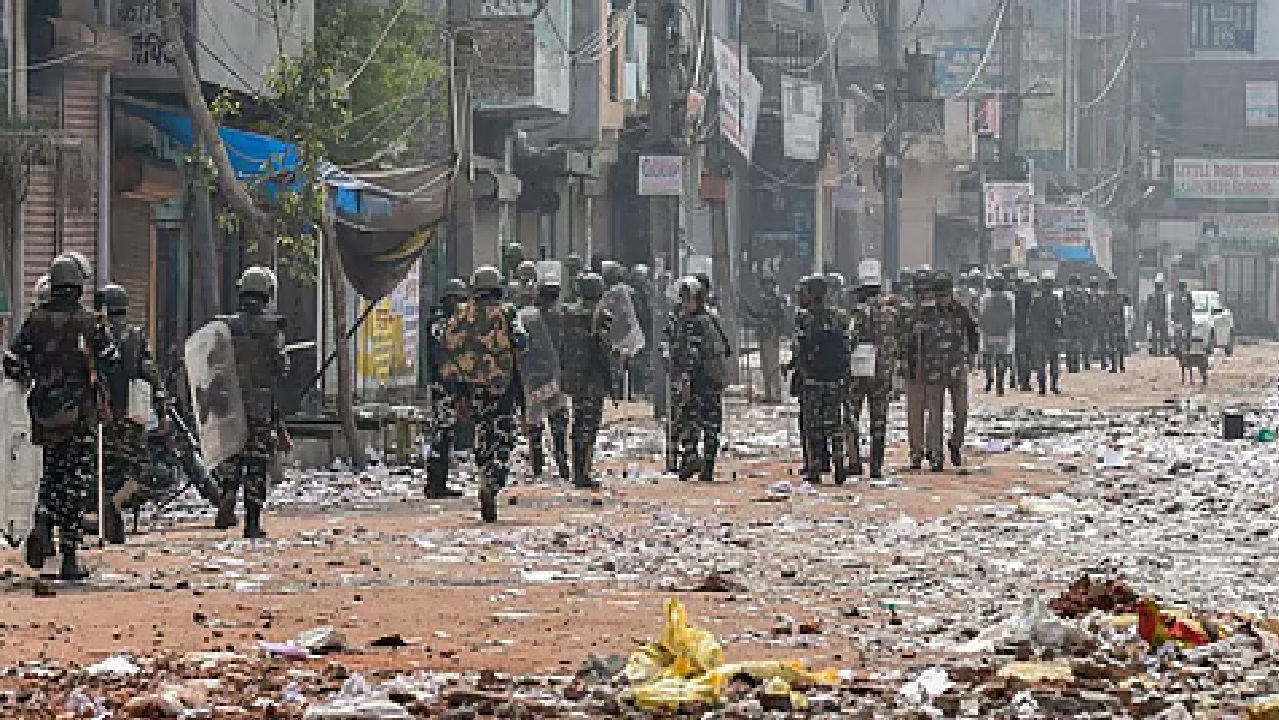Tensions Erupt in Dhubri Over Temple Desecration
In a dramatic escalation of law-and-order response, Assam Chief Minister Himanta Biswa Sarma issued ‘shoot-at-sight’ orders on Friday against those involved in the desecration of Hindu temples in Dhubri town, following communal unrest sparked by the alleged throwing of beef at a Hanuman temple during Eid celebrations.
During his visit to the volatile town, Sarma declared zero tolerance toward what he described as a deliberate attempt to incite communal violence and attack religious sentiments. “The incident of throwing beef at the Hanuman Mandir should have NEVER happened,” he wrote on X (formerly Twitter), assuring that those responsible “won’t be spared.”
A Flashpoint of Communal Tension
Communal tension first surfaced on Sunday, when animal remains suspected to be beef were discovered near the temple. The area, already sensitive due to its border location with Bangladesh, saw demonstrations on Monday that soon spiraled out of control. Stone-pelting incidents were reported, prompting police to fire tear gas shells to disperse the crowds.
According to Dhubri Deputy Commissioner Dibakar Nath, the unrest escalated as protestors turned aggressive, forcing authorities to impose prohibitory orders under Section 144 from Monday night. All shops were shuttered, and public gatherings of more than five people were banned.
So far, ten individuals have been arrested, and the police are continuing their investigation to uncover deeper links, including a possible organized network behind the act.
Emergence of a ‘Beef Mafia’?
In a stark warning, CM Sarma pointed to the rise of what he termed a “new beef mafia” in Dhubri. He alleged that this group procured thousands of animals ahead of Eid, possibly to orchestrate large-scale communal provocation. The state is treating this as part of a larger pattern of incitement aimed at destabilizing social harmony.
Officials suspect this network is leveraging religious festivals to foment unrest, especially in border districts with complex demographics. The region’s proximity to Bangladesh and its history of illegal cross-border movement has long made it vulnerable to demographic and ideological shifts.
A state minister added that such incidents were not isolated but rather “symptoms of calculated demographic transformation,” suggesting the need for closer scrutiny and long-term policy responses in such areas.
Strong Words, Stronger Actions
In a series of defiant posts, CM Sarma underscored his personal commitment to preserving religious sanctity. He even pledged to stand guard at the temple himself during the next Eid, reflecting his political brand of assertive Hindutva and direct governance.
The administration has begun intense surveillance and enforcement in Dhubri, promising swift legal action against perpetrators. With security forces deployed, and tensions simmering, Assam finds itself at a fragile juncture between maintaining order and preventing communal fallout.
A Warning and a Test
The Dhubri incident is not just a law-and-order challenge—it is a litmus test for India’s secular fabric and the state’s ability to navigate complex communal sensitivities. CM Sarma’s response signals a hardline stance against religious provocation, but it also raises concerns about escalation and proportionality.
What unfolds next in Dhubri will have implications beyond Assam, especially in how states balance security, religious sentiment, and civil liberties. One thing is clear: Assam’s leadership has drawn a firm line, and Dhubri has become ground zero in a high-stakes contest between order and chaos.
(With agency inputs)








